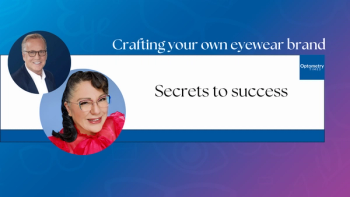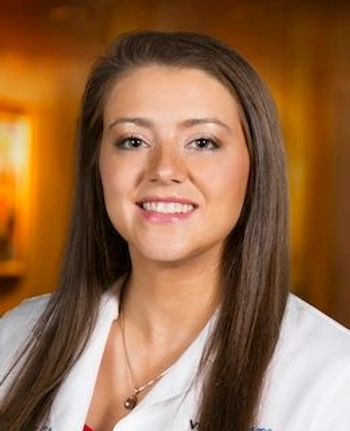
How ODs fit into the future of online refraction
Executives from online refraction companies discussed their services during Vision Expo East. Opternative CEO Aaron Dallek; EyeNetra CTO Vitor Pamplona, PhD; and myVisionPOD Founder Hal Wilson shared information about their companies and answered questions from the audience about the future of online refraction.
New York City-Executives from online refraction companies discussed their services during Vision Expo East. Opternative CEO Aaron Dallek; EyeNetra CTO Vitor Pamplona, PhD; and myVisionPOD Founder Hal Wilson shared information about their companies and answered questions from the audience about the future of online refraction.
Related:
Each company has faced a variety of backlash from the optometric community. Organized optometry has succeeded in banning online refraction in multiple states. Most recently, the
Dallek, Dr. Pamplona, and Wilson explained the future of online refraction and how optometrists can fit into that future.
Related:
Why online refraction?
Why did these companies decide to get into providing refraction services without the direct involvement of a doctor?
Dallek, Dr. Pamplona, and Wilson all agreed that there is an eyecare accessibility problem both in the United States and abroad, and each said they believe online or remote refraction could help address that concern for billions of people.
“If you consider anyone 20/25 or worse, we have about 2.4 billion people who need some correction,” Dr. Pamplona says. “So we asked, ‘How can we reach these people and get them back into the system?’ And it turns out there are about 6 billion cell phones out there, so people already have them and know how to use them.”
Dallek says that services like Opternative help get those people who aren’t getting regular eye care involved back in the eyecare space.
“The key is accessibility and affordability,” says Dallek. “There are 110 million exams done in the U.S. every year and 210 to 220 million people in the U.S. who need some sort of vision correction. Until we are getting 200 million people getting an eye exam every year, we should be focusing on making it as convenient as possible to get an eye exam.
“That’s what our industry should be focused on,” he says. “You make more money on selling glasses and contact lenses than you do on an eye exam, for the most part.”
Dr. Pamplona says there is both a market that needs this kind of technology and a market that wants this kind of technology.
“For us, the biggest need is in the developing countries that are underserved, and we want to make sure that they are receiving care,” he says. “But the biggest demand is in the U.S. and Europe. In the U.S., you have a fairly large amount of people who don’t want to go into the practice any more-they want something different, a new experience.”
For myVisionPOD, providing a more convenient way to receive a prescription means making it easier for patients to purchase glasses, which
“We’re in the online eyeglass business, and the biggest obstacle for our patients is not having a current refraction,” says Wilson. “From our perspective, the refraction is the obstacle-not the endgame-for the patient. So we wanted to remove that obstacle and provide unparalleled access, convenience, and price.”
Where can ODs fit in with online refraction?
Ophthalmologists have already embraced companies like Opternative and EyeNetra, often serving as the prescribing doctor. If the online refraction market continues to grow, what role can optometrists play?
Dr. Pamplona says he understands why optometrists are worried about their profession when so much profit depends on selling glasses and online companies are selling frames for cheap. But, he says, a change in focus could help make up those profits and stem some of the fears surrounding not only online optical but also online refraction.
“Practices usually undersell the exam and profit on the exam,” says Dr. Pamplona. “In my position-I’m not an OD-but if the optometrist focused more on establishing a nice relationship with the patient so you can charge full price for the exam and make sure that exam is great, you would not be so worried about the eyeglasses because it doesn’t matter where the patient buys glasses.”
Related:
He suggests rebranding your ocular health exam as a preventative care exam in order to change the perception of the services you provide amongst your patients.
Dallek says he would love to see ODs use Opternative’s technology. He envisions a world in which an optometrist can allow his busy patient to use Opternative in order to renew her current contact lens prescription while also reminding her that she’ll also need to come in for an ocular health exam.
“I would love to see everyone here use our technology and just let us be the infrastructure,” he says. “In the ideal world, I would love to see you own the patient and think of your goal as an optometrist is to engage with your patient whether it be online or in person. You’re using this as a tool in your tool box that allows to keep that relationship strong and provide convenience.”
The future of online refraction?
What will online refraction look like five years from now, and how will it affect optometrists?
Wilson says online refraction will continue to account for only a small percentage of the market.
“It’s going to be just like online glasses-it’s going to be for a special person, not for everybody,” he says.
However, Dallek disagrees, pointing to the rapid growth of disruptive technologies in other industries over the last decade. But he doesn’t think it’s something to be afraid of.
“That’s going to be a good thing for everyone,” he says. “I think we’re going to be able to go after the 60 to 70 million adults who say they haven’t had an eye exam in the last two years because of cost and convenience. Those are the people who are going to get exams more often and ultimately buy glasses and contact lenses.”
Dallek says despite the legislative challenges companies like Opternative have faced, online refraction is the future.
“The American Optometric Association and the state-based societies that are trying to pass laws that are restricting these technologies are going to hold for only so long because the demand inevitably wins,” he says. “So the question is, how do you get ahead? We want to help those who want to get ahead of it.”
Dallek says Opternative wants to offer a professional version of its program that ODs can officially offer to their patients.
“When ODs are ready, we’re ready to build it,” he says.
Newsletter
Want more insights like this? Subscribe to Optometry Times and get clinical pearls and practice tips delivered straight to your inbox.


















































.png)


